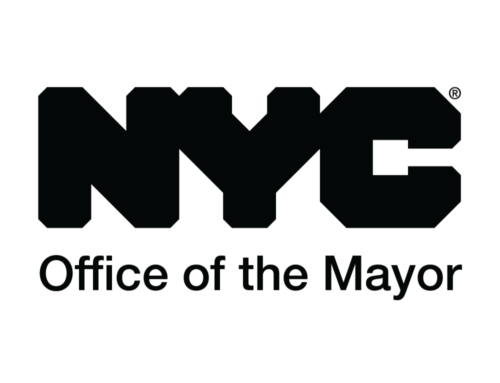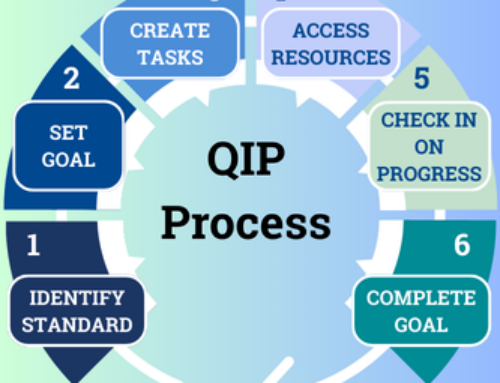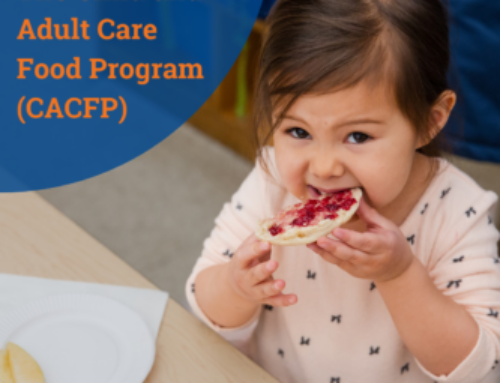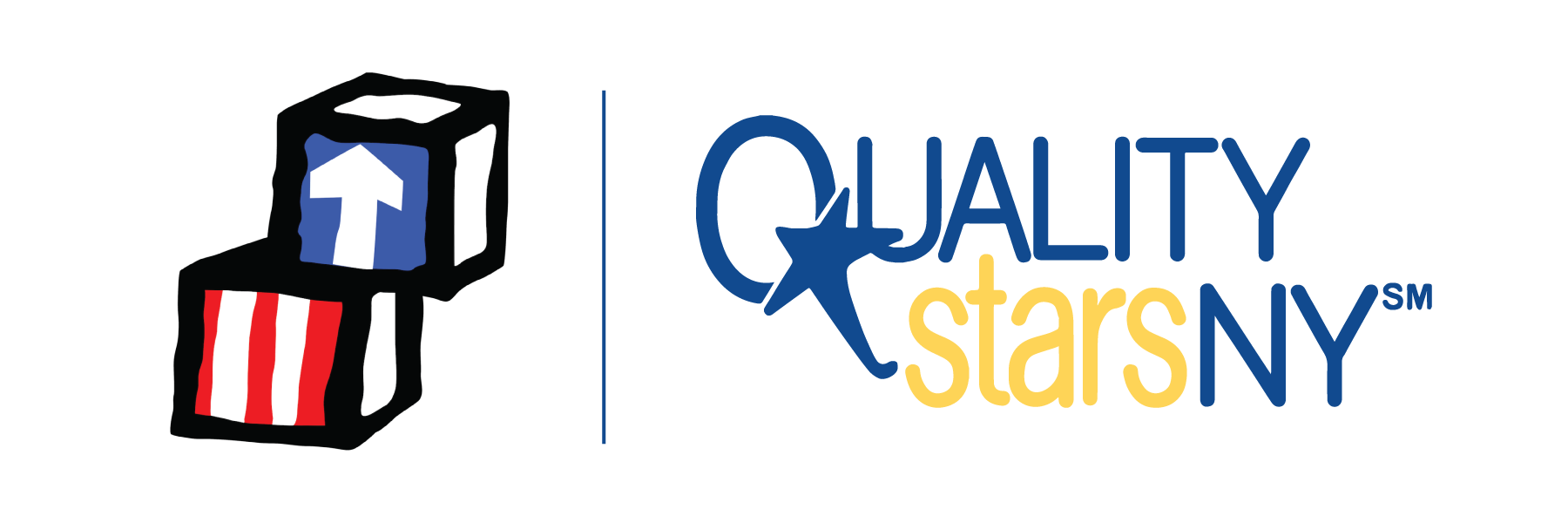
This month, Head Start is celebrating its 60th anniversary. For decades Head Start has provided a wide-ranging catalogue of services to help families meet their most basic needs and put their children on the road to future success. With 425 of New York’s Head Start programs participating in QUALITYstarsNY, we are proud to partner with an organization whose service to over 37 million children and their families since 1965 shows that our country is at its best when we uplift those who need it most.
History of Head Start
In 1964, President Lyndon B. Johnson declared The War on Poverty during his State of the Union address. At this time, 19% of Americans lived below the poverty line, and Johnson’s declaration aimed “not only to relieve the symptom of poverty, but to cure it and, above all, to prevent it”. Over the course of the rest of the decade, Congress would pass legislation that would become Medicare and Medicaid, expand housing subsidies and urban development programs, and implement changes that transformed American schools, including the launch of Project Head Start in the summer of 1965.
Project Head Start began as an 8-week initiative launched by the Office of Economic Opportunity designed to help break the cycle of poverty, providing preschool children of low-income families with a comprehensive program to meet their emotional, social, health, nutritional and psychological needs. As it remains today, a key tenet of the program at its founding was to be culturally responsive to the communities served, and to give ownership to community members over the success of the program through volunteer opportunities and other donations to uplift their surrounding environment. This initial project served 561,000 children in underserved communities across the country, and in 1966, Project Head Start was expanded to include service during the school year, enrolling 733,000 children (Allen & Smith, 2008).
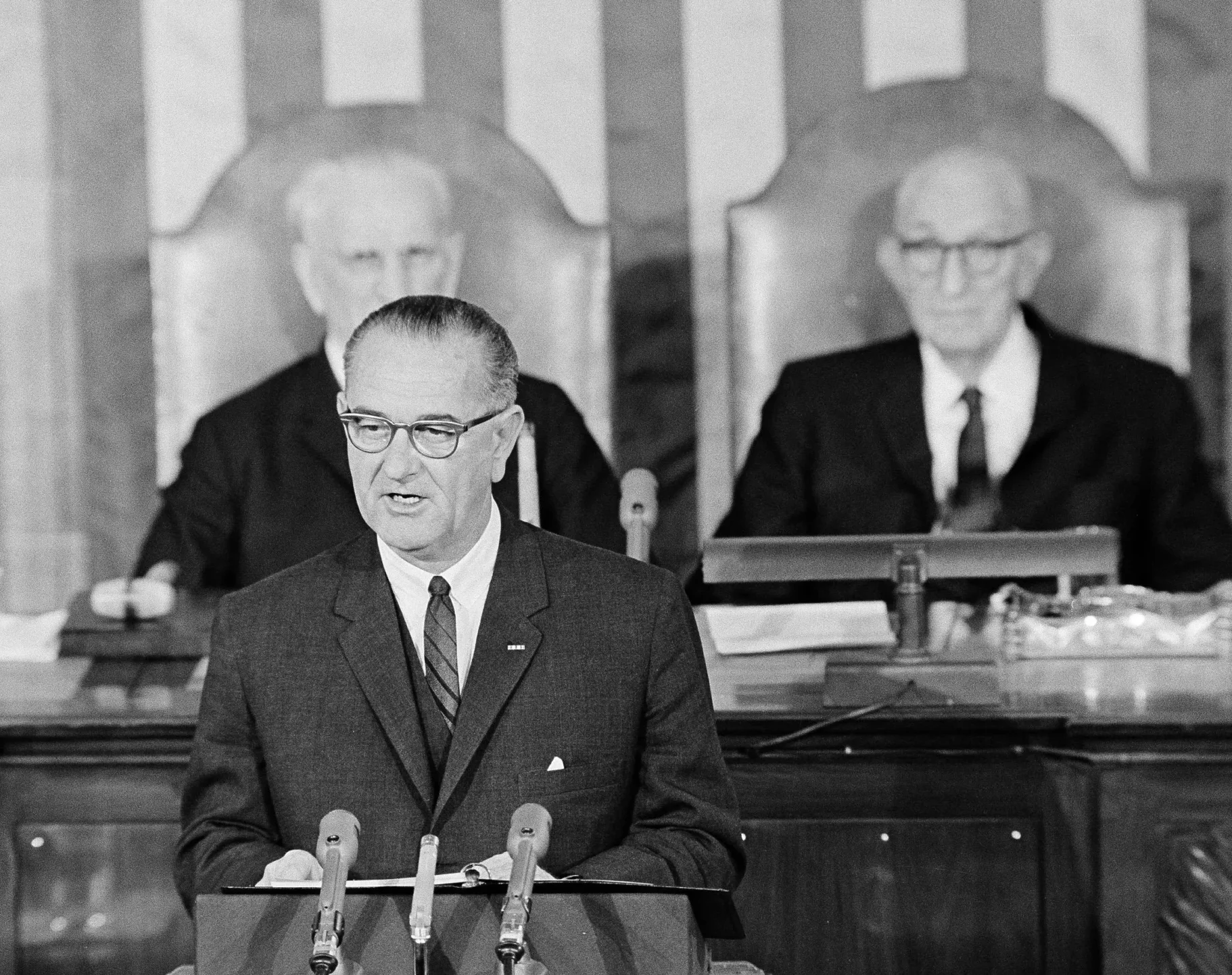
President Johnson delivering his State of the Union address.
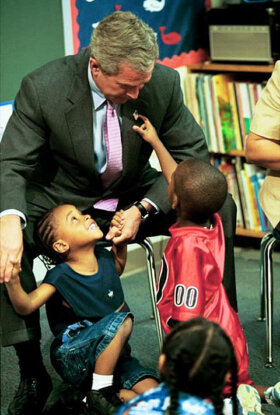
President Bush plays with children in a Head Start classroom.
In 1969, President Richard Nixon transferred Head Start to the federal Office of Child Development, now known as the Administration for Children and Families. In the following years, Head Start would expand to include services for migrant farmworker families and children with disabilities, create material promoting the importance of good nutrition for children, and establish several initiatives to improve options for professional development. This culminated in the founding of the National Head Start Association (NHSA) in 1973, where Head Start directors recognized the need for an association that would advocate for the Head Start community in Congress.
In the years preceding, Head Start continued to grow, adding services for bilingual children in 1977, spearheading efforts to integrate children with disabilities into the classroom in 1980, and using the McKinney-Vento Homeless Assistance Act passed in 1987 to automatically enroll children experiencing homelessness (Head Start Timeline 2024). The Clinton Administration authorized Head Start programs to operate full-time and year-round in 1998. By the time President George W. Bush reauthorized Head Start by passing The Improving Head Start for School Readiness Act of 2007, including several new provisions to strengthen program quality by aligning Head Start school readiness goals with state early learning standards, Head Start had been expanded and improved upon by six Presidential Administrations from both political parties. The results from this momentously impactful pilot project are clear: when we provide children and families with high-quality education, tools, and resources to improve learning outcomes, our country benefits.
The QUALITYstarsNY and Head Start Partnership
QUALITYstarsNY has been working with Head Start programs since our inception. Of the 31 programs that have been with us since 2012, half of them are Head Start programs. Because Head Start programs automatically meet 58% of our Quality Standards, we created an abbreviated set of Standards for Head Start programs, recognizing the overlap and complementary nature of New York’s Standards for high-quality early education and Head Start’s Head Start Program Performance Standards (HSPPS). QUALITYstarsNY’s relationship with Head Start expanded in 2016, when the Office of Head Start revised the HSPPS to require participation in their state’s Quality Rating and Improvement System for early childhood programs (QRIS). This requirement reflected Head Start’s longstanding commitment to providing high–quality early care and education to the communities that need it most. While this requirement was removed from the HSPPS in 2024, QUALITYstarsNY continues to onboard new Head Start programs, and has nearly doubled the number of Head Start programs we serve in the past two years.
Because of the rigorous focus Head Start programs employ on improving the quality of their care, as of May 2025, the majority of New York’s Head Start programs participate in QUALITYstarsNY and have an average Star Rating of 4 out of 5 Stars, which is 2 Stars higher than the average QUALITYstarsNY program. QUALITYstarsNY Head Start programs serve nearly 30,000 children and employ over 5,000 child care professionals in our state in areas where access to high-quality child care is limited, and opportunities to work and grow as an ECE professional are sparse.
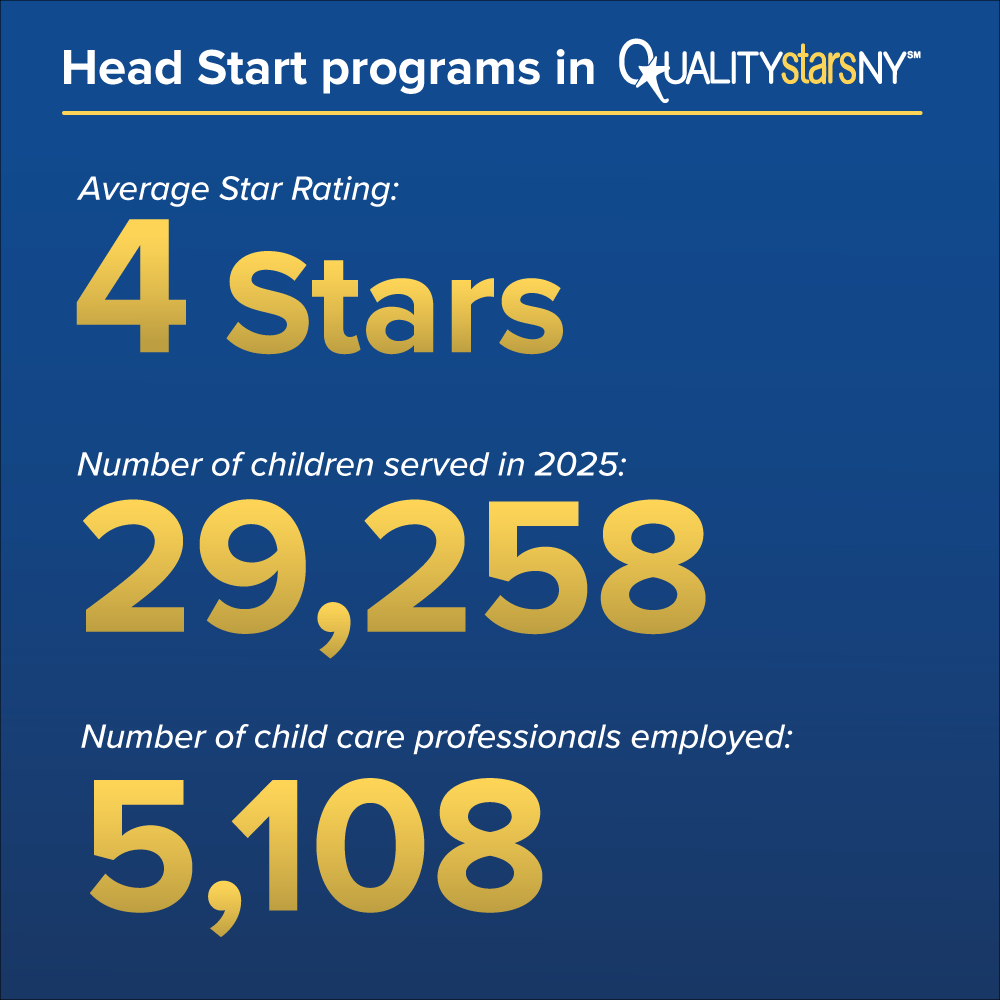
Without Head Start, over 37 million children in underserved areas since 1965 would have grown up without access to high-quality classrooms, motivated, well-compensated child care professionals that reflect their community, and essential programming to help improve educational and developmental outcomes. Head Start is essential not only to the children and families of New York, but to the entire country. QUALITYstarsNY is immensely proud to work with our Office of Head Start Northeast (formerly Region II) partners in ensuring New York’s children and families have access to the high-quality early care and education they deserve and will continue to do so in the years to come.

